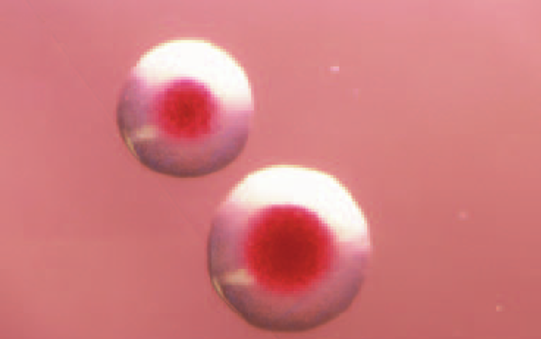Published: 23/09/21 14:16 Categories: Microbiology
In the food industry, several pathogenic microorganisms need to be kept under close surveillance, among them Yersinia enterocolitica. According to the latest EFSA reports, this pathogen remains among the four most common zoonoses in Europe and, surprisingly, it is hardly mentioned.
What are we up against?
The survival capabilities of Yersinia have been progressively discovered in recent years. It is able to grow very fast in ideal temperature and pH conditions (29ºC and pH 7.6), doubling its population in only 30 minutes. In addition, it can survive in very diverse and even extreme conditions such as temperatures of around 5ºC or a wide pH range (4-10), although it is very sensitive to temperature rises.
All this means that Yersinia will survive at very low temperatures and even vacuum conditions, giving it the ability to remain active in certain foods, as well as resisting production and packaging treatments. It is commonly found in meat and meat products, however, outbreaks caused by fresh produce such as vegetables contaminated by Yersinia have been found in the last three years, making the control of these products necessary.

How do I detect Yersinia in my food?
Standard ISO10273 establishes a complex method of analysis to determine the presence of pathogenic Yersinia species. It starts with an initial suspension with PSB as a diluent. Part of this dilution is inoculated onto the ITC enrichment medium. The PSB medium and the enrichment medium are incubated at 25ºC for 48 hours. At the same time, part of this dilution in PSB will be used to inoculate on a CIN selective medium with its selective supplement, which is incubated at 30ºC for 24 hours.
Subsequently, a solution of KOH with PSB is added to the PSB and ITC media. After the alkaline treatment, both media are sown on CIN agar and left to incubate at 30ºC for 24 hours.
Following this, suspicious/typical colonies are to be identified to be selected for confirmation protocols. Five suspicious Y. enterocolitica colonies are selected and streaked on CIN agar at 37ºC for 24 hours. After this period, colonies are identified by morphology under the stereo microscope with oblique transmitted light ('bull's eye' colonies). Plates with atypical colonies should be discarded.

Saija, H.,et al. (2006). Simplified Phenotypic Scheme Evaluated by 16S rRNA Sequencing for Differentiation between Yersinia enterocolitica and Y. enterocolitica-Like species. Journal of clinical microbiology. 44. 1077-80.
Typical colonies are re-cultured under the same conditions on CIN medium, after which confirmation tests will be carried out. These tests, depending on the results, will determine whether the suspicious colonies are pathogenic strains of Yersinia enterocolitica.
If, like us, you have found the process a bit complex, don't hesitate to watch our webinar on Yersinia where the ISO is unraveled and its confirmation processes are reviewed.

 Pseudomonas aeruginosa: The emerging challenge in water management
Pseudomonas aeruginosa: The emerging challenge in water management
 Can alternative methods be used in pharmaceutical microbiology testing?
Can alternative methods be used in pharmaceutical microbiology testing?
 Yeast extract, your ally in search of high concentrations
Yeast extract, your ally in search of high concentrations
 The evolution of PCR: Transforming science and the food industry
The evolution of PCR: Transforming science and the food industry
 Discover our latest innovations at the ADLM fair in Chicago!
Discover our latest innovations at the ADLM fair in Chicago!